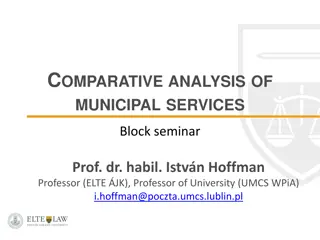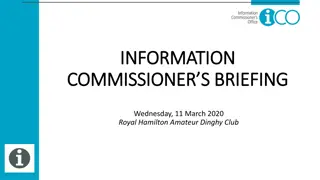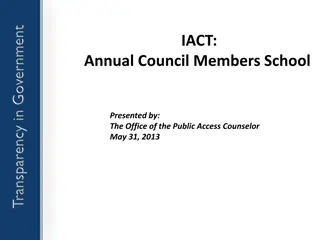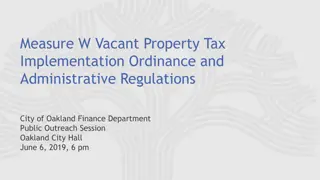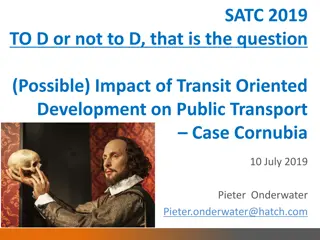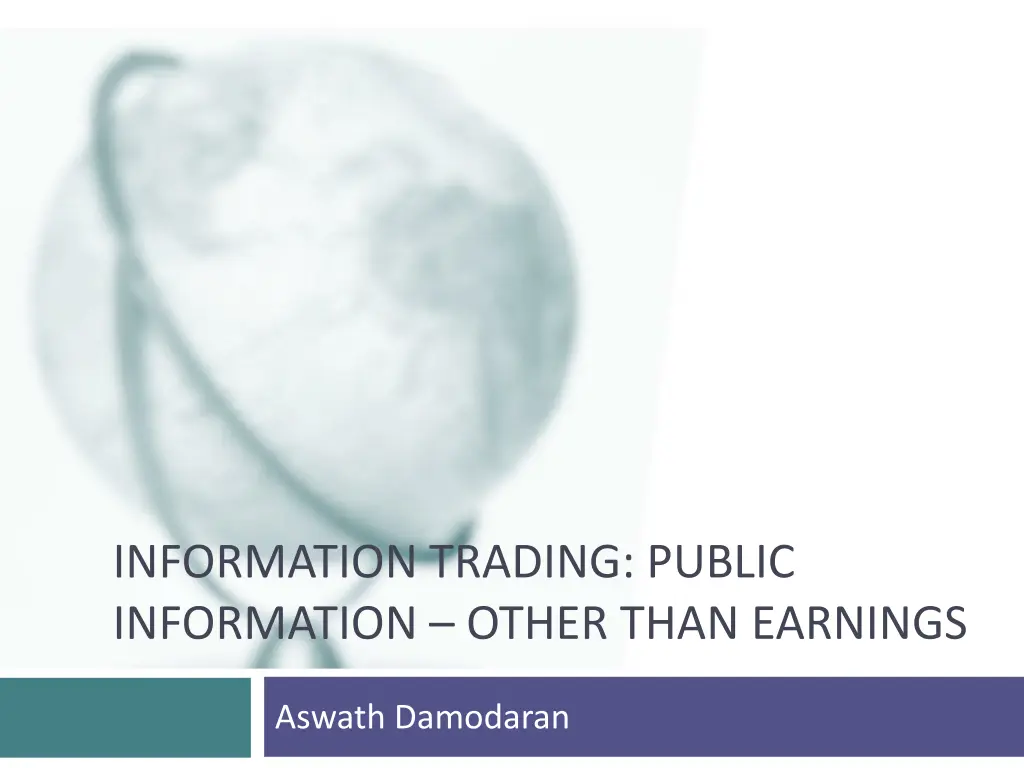
Evidence on Post-Acquisition Performance and Divestitures
Explore the impact of acquisitions on firms as revealed through studies by McKinsey & Co., KPMG, and other researchers. Discover the trends in excess returns, operational performance, and the high rate of divestitures post-acquisition.
Download Presentation

Please find below an Image/Link to download the presentation.
The content on the website is provided AS IS for your information and personal use only. It may not be sold, licensed, or shared on other websites without obtaining consent from the author. If you encounter any issues during the download, it is possible that the publisher has removed the file from their server.
You are allowed to download the files provided on this website for personal or commercial use, subject to the condition that they are used lawfully. All files are the property of their respective owners.
The content on the website is provided AS IS for your information and personal use only. It may not be sold, licensed, or shared on other websites without obtaining consent from the author.
E N D
Presentation Transcript
INFORMATION TRADING: PUBLIC INFORMATION OTHER THAN EARNINGS Aswath Damodaran
I. Acquisitions ? 2
Across different types of acquisitions Target Firm Premiums in Acquisitions 30.00% 25.00% Cumulative Abnormal Return (2 days) 20.00% 15.00% 10.00% 5.00% 0.00% Tender offer(A) vs Mergers (B) Cash (A) vs Stock (B) Categorization of Acquisitions Hostile (A) vs Friendly (B) A: Tender, Cash, Hostile B: Merger, Stock, Friendly 3
The Effect on Acquirers.. Mixed evidence on stock price effect: Jensen and Ruback report excess returns of 4% for bidding firm stockholders around tender offers and no excess returns around mergers. Jarrell, Brickley and Netter, in their examination of tender offers from 1962 to 1985, note a decline in excess returns to bidding firm stockholders from 4.4% in the 1960s to 2% in the 1970s to -1% in the 1980s. Price drops for about half of all acquirers: Other studies indicate that approximately half of all bidding firms earn negative excess returns around the announcement of takeovers, suggesting that shareholders are skeptical about the perceived value of the takeover in a significant number of cases. 4
After the acquisition Operating Evidence Most acquisitions don t pass basic financial tests: McKinsey and Co. examined 58 acquisition programs between 1972 and 1983 for evidence on two questions: (1) Did the return on the amount invested in the acquisitions exceed the cost of capital? (2) Did the acquisitions help the parent companies outperform the competition? They concluded that 28 of the 58 programs failed both tests, and six failed at least one test. And earn negative excess returns: In a follow-up study of 115 mergers in the U.K. and the U.S. in the 1990s, McKinsey concluded that 60% of the transactions earned returns on capital less than the cost of capital, and that only 23% earned excess returns. While delivering little or no synergy: In 1999, KPMG examined 700 of the most expensive deals between 1996 and 1998 and concluded that only 17% created value for the combined firm, 30% were value neutral and 53% destroyed value. 5
After the acquisition Divestitures Many get reversed: The most damaging piece of evidence on the outcome of acquisitions is the large number of acquisitions that are reversed within fairly short time periods. Mitchell and Lehn note that 20.2% of the acquisitions made between 1982 and 1986 were divested by 1988. In a study published in1992, Kaplan and Weisbach found that 44% of the mergers they studied were reversed, largely because the acquirer paid too much or because the operations of the two firms did not mesh. Especially over longer time periods: Studies that have tracked acquisitions for longer time periods (ten years or more) have found the divestiture rate of acquisitions rises to almost 50%, suggesting that few firms enjoy the promised benefits from acquisitions do not occur. In another study, 6
Takeover based investment strategies Invest in target firm prior to acquisition announcement: The first and most lucrative, if you can pull it off, is to find a way (legally) to invest in a target firm before the acquisition is announced. Invest in either target or acquiring firm or both after acquisition is announced but before it is completed: The second is to wait until after the takeover is announced and then try to take advantage of the price drift between the announcement date and the day the deal is consummated. This is often called risk arbitrage. Invest in good mergers and sell short on bad ones: The third is also a post-announcement strategy, but it is a long-term strategy where you invest in firms that you believe have the pieces in place to deliver the promised synergy or value creation. 7
Preannouncement Trading Research indicates that the typical target firm in a hostile takeover has the following characteristics: It has under performed other stocks in its industry and the overall market, in terms of returns to its stockholders in the years preceding the takeover. It has been less profitable than firms in its industry in the years preceding the takeover. It has a much lower stock holding by insiders than do firms in its peer groups. It has a low price to book ratio & a low ratio of value to replacement cost. There are two ways in which we can use the findings of these studies to identify potential target firms. Develop a set of screens that incorporate the variables mentioned above. You could, for instance, invest in firms with market capitalizations below $ 5 billion, with low insider holdings, depressed valuations (low price to book ratios) and low returns on equity. The second and slightly more sophisticated variant is to estimate the probability of being taken over for every firm in the market using statistical techniques 8
Post-Announcement Trading In this strategy, you buy companies after acquisitions or mergers are completed because you believe that they will be able to deliver what they promise at the time of the merger higher earnings growth and synergy. The likelihood of success seems to be greater In hostile acquisitions, where the management is replaced. In mergers of like businesses than in conglomerate mergers In cost-saving mergers than in growth-oriented mergers In mergers where plans for synergy are made before the merger In acquisitions of small companies by larger companies (as opposed to mergers of equals) 9
Determinants of Success Identify the information around which your strategy will be built: Since you have to trade on the announcement, it is critical that you determine in advance the information that will trigger a trade. Invest in an information system that will deliver the information to you instantaneously: Many individual investors receive information with a time lag 15 to 20 minutes after it reaches the trading floor and institutional investors. Execute quickly: Getting an earnings report or an acquisition announcement in real time is of little use if it takes you 20 minutes to trade. Immediate execution of trades is essential to succeeding with this strategy. Keep a tight lid on transactions costs: Speedy execution of trades usually goes with higher transactions costs, but these transactions costs can very easily wipe out any potential you may see for excess returns). Know when to sell: Almost as critical as knowing when to buy is knowing when to sell, since the price effects of news releases may begin to fade or even reverse after a while. 1. 2. 3. 4. 5. 13






